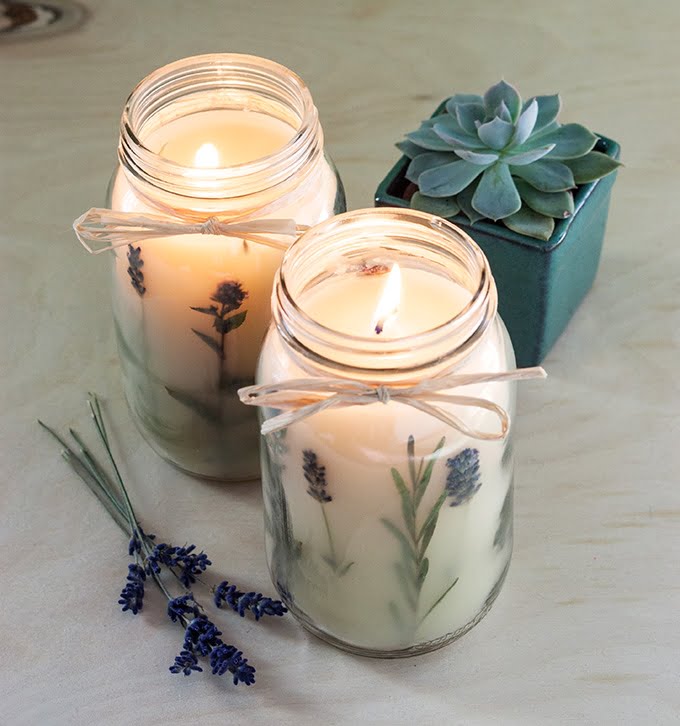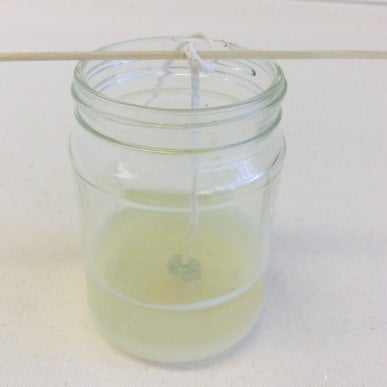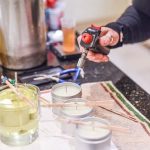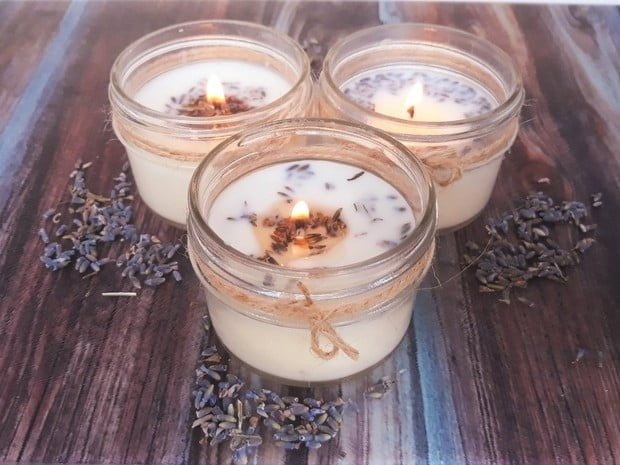Home made candle making is a delightful hobby that allows you to not only express your creativity but also find tranquility in the process. There is something incredibly satisfying about creating your own candles from scratch, using essential materials and tools. Not only do homemade candles make for unique and personalized gifts, but they also offer numerous benefits compared to store-bought alternatives.
One of the main benefits of making your own candles is that it gives you complete control over the ingredients used. Many commercially available candles contain harmful chemicals and toxins that can be detrimental to both our health and the environment. By making your own candles, you can choose natural and eco-friendly materials such as soy wax or beeswax, ensuring a cleaner burn and reducing your carbon footprint.
In addition to being more environmentally friendly, homemade candles also allow you to customize both the scent and aesthetic of your creations. With an endless variety of fragrances and essential oils available, you can create candles that cater specifically to your preferences. Furthermore, by experimenting with different candle-making techniques like dipping, container, and rolled candles, you can achieve various shapes, sizes, and textures that perfectly suit your home decor or personal style.
Overall, home made candle making provides a creative outlet for self-expression while offering numerous benefits such as control over ingredients, customization options, and environmental consciousness. Whether you are a beginner looking to delve into a new hobby or an experienced candle maker looking for fresh ideas, this article will guide you through the process step-by-step and provide inspiration for creating beautiful homemade candles.
The Benefits of Making Your Own Candles
Making your own candles at home offers a wide range of benefits that go beyond just the enjoyment of creating something with your own hands. Here are some of the key benefits to consider:
1. Cost – effective: One of the primary benefits of making your own candles is that it can be more cost-effective compared to buying store-bought candles. Candles made at home often require basic materials and ingredients that are readily available and affordable. By making your own candles, you can save money in the long run while still enjoying the ambiance and beauty they bring.
2. Customization: When you make your own candles, you have complete control over their appearance, scent, and size. You can choose from a wide variety of wax types, colors, fragrances, and additives to create candles that perfectly suit your preferences and match your home decor. This level of customization allows for endless creativity and ensures that each candle reflects your personal style.
3. Relaxation and self – care: Engaging in candle making can be a therapeutic and enjoyable activity. The process itself can be quite calming and meditative, allowing you to take a break from the stresses of daily life. Making your own candles enables you to indulge in an artistic hobby that promotes relaxation and self-care, providing a sense of accomplishment when you see the final result.
| Year | Amount Spent on Candles (in billions) |
|---|---|
| 2016 | 3.14 |
| 2017 | 3.22 |
| 2018 | 3.36 |
| 2019 | 3.44 |
As shown in the table, the amount spent on candles has been steadily increasing over the years, indicating a growing interest and demand for candles. This data highlights the potential popularity and market value of homemade candle making as an enjoyable hobby that can also be turned into a small business venture if desired.
Essential Materials and Tools for Home Made Candle Making
Making your own candles at home requires a few essential materials and tools to ensure that the process goes smoothly. Here is a list of the items you will need:
- Wax: The most important material for candle making is wax. There are various types of wax available, such as soy, beeswax, paraffin, and more. Each type has its own unique characteristics and advantages, so you can choose the one that suits your preferences.
- Wicks: Wicks are used to provide the flame in a candle. They come in different sizes and materials. Cotton wicks are commonly used as they burn evenly and do not produce excess smoke or soot.
- Containers: If you plan on making container candles, you will need suitable containers to hold the wax. Glass jars or ceramic containers work well for this purpose. Ensure that the containers are clean and heat-resistant.
- Double Boiler or Candle Melting Pot: To melt the wax safely, you will need a double boiler or a dedicated candle melting pot. This ensures even heating and prevents any accidents.
- Thermometer: A thermometer is essential to monitor the temperature of the melted wax accurately. Different types of waxes have specific melting points, so it’s important to maintain the correct temperature for optimal results.
- Fragrances and Essential Oils: Adding scents to your candles can create a pleasant ambiance in your home. Choose fragrances or essential oils that complement each other and suit your personal preferences.
- Colorants: If you want colored candles, you will need colorants specifically designed for candle making. These can be liquid dyes or dye chips that dissolve easily in melted wax.
- Molds: If you wish to make shaped candles (such as pillar or novelty-shaped candles), consider investing in molds made specifically for candle making.
- Heat-Resistant Utensils: You’ll need utensils such as a heatproof pitcher or a stirring spoon to handle the hot wax safely.
- Safety Equipment: Lastly, safety should always be a priority when working with hot wax. Make sure to have gloves, goggles, and a fire extinguisher nearby in case of emergencies.
By having these essential materials and tools on hand, you can ensure a hassle-free candle making experience at home. Enjoy the creative process and let your imagination shine through in each unique candle you create.
Safety Precautions to Follow When Making Candles at Home
When engaging in home made candle making, it is important to prioritize safety to prevent accidents and ensure a successful and enjoyable experience. Follow these safety precautions to have a worry-free candle making session:
- Work in a Well-Ventilated Area: Candles are typically made using various chemical ingredients that can release fumes when melted. To avoid inhaling potentially harmful substances, always work in a well-ventilated area such as an open window or with a fan circulating the air.
- Use Appropriate Personal Protective Equipment (PPE): Protect yourself by wearing PPE such as gloves and goggles when handling hot wax, fragrance oils, dyes, or any other chemicals. This will shield your skin from burns and your eyes from potential splashes.
- Keep Flammable Materials Away: It’s crucial to keep flammable materials away from open flames or heat sources during the candle making process. Be cautious of loose fabrics, papers, or any other highly flammable objects nearby that can easily catch fire.
- Pay Attention to Temperature Control: Maintain a safe temperature while melting wax by using a double boiler or a dedicated melting pot specifically designed for candle making. Avoid overheating the wax as high temperatures can cause fires or burns.
- Handle Hot Wax with Care: When pouring hot wax into molds or containers, always use a heat-resistant pouring pitcher with a spout for controlled pouring. Be mindful of the hot molten wax as accidental spills can result in severe burns.
- Never Leave Unattended Flames: When burning candles, never leave them unattended as they can pose fire hazards if left within reach of flammable objects like curtains or paper products. Always extinguish the flame before leaving the room or going to bed.
By following these safety precautions, you can engage in home made candle making with peace of mind knowing that you are taking the necessary steps to protect yourself and your surroundings from potential risks. Remember, safety should always be a priority when pursuing any creative hobby.
Step-by-Step Guide
Making your own candles at home can be a rewarding and creative hobby. Not only do you have the opportunity to express your creativity, but you also get to experience the soothing and comforting ambiance that candles provide. Whether you want to make candles for personal use or as gifts for friends and family, this step-by-step guide will help you get started on your candle making journey.
To make your own candles at home, you will need a few essential materials and tools. Here is a list of what you will need:
- Wax: There are different types of wax available, including soy wax, beeswax, and paraffin wax. Each type has its own characteristics and melting points.
- A heat source: You can use a double boiler or a melting pot specifically designed for candle making to melt the wax.
- Wicks: Choose wicks that are appropriate for the size of the container or mold that you will be using.
- Fragrance oils or essential oils: These add scent to your candles. Be sure to choose oils that are safe for candle making.
- Dye or colorants (optional): If you want colored candles, you can use dye chips or liquid dyes specifically formulated for candle making.
- Containers or molds: Decide whether you want to make container candles using jars or tins, or if you prefer to make molded candles in shapes such as pillars or votives.
- Thermometer: This is essential for ensuring that the wax reaches the correct temperature.
- Candle-making equipment: You’ll need tools like a pouring pot, stirring utensils, a scale (for measuring ingredients), and a heat-resistant surface to work on.
Once you have gathered all the necessary materials and tools, it’s time to start making your own candles. Follow these steps:
- Prepare your container or mold by cleaning it thoroughly and securing the wick in place.
- Melt the wax using your chosen heat source. Monitor the temperature closely to ensure it doesn’t get too hot.
- If desired, add fragrance oils or essential oils to the melted wax. Be sure to follow the recommended usage guidelines for each oil.
- Add colorants (if desired) and stir well to distribute the color evenly throughout the wax.
- Pour the melted wax carefully into your prepared container or mold, making sure not to disturb the wick.
- Allow the candle to cool and solidify completely before trimming the wick and lighting your homemade candle.
Making your own candles at home can be a fun and fulfilling hobby that allows you to customize scents, colors, and styles. As you gain experience and confidence in candle making, you can experiment with different techniques and ingredients to create unique candles that reflect your personal taste. Enjoy the process of creating beautiful candles that bring warmth and serenity into your home or make thoughtful gifts for loved ones.
Exploring Versatile Candle Making Techniques
Candle making is a versatile and creative hobby that allows you to explore various techniques and create unique, personalized candles. In this section, we will delve into three popular candle making techniques: dipping, container, and rolled candles.
Dipping Candles
Dipping candles is one of the oldest and simplest candle making techniques. It involves repeatedly dipping a wick into melted wax until the desired thickness is achieved. This method requires patience and precision to create smooth and evenly coated candles.
To make dipped candles, you will need a heat-resistant container filled with melted wax, preferably in a double boiler to ensure even heating without direct flame contact. Dip the wick into the wax, letting it soak for a few seconds before pulling it out slowly. Allow the excess wax to drip off before dipping again. Repeat this process until your candle reaches the desired diameter or thickness.
Container Candles
Container candles are made by pouring melted wax directly into containers such as glass jars or ceramic vessels. This technique offers endless possibilities for creativity, as you can experiment with different containers, waxes, colors, and fragrances.
To make container candles, start by choosing a suitable container that can withstand the heat of the melting wax. Prepare your chosen container by securing the wick at the bottom with a wick sticker or hot glue gun. Melt your preferred wax in a double boiler and add colorants and fragrance oils if desired. Once fully melted and mixed, carefully pour the wax into the prepared container while holding the wick steady.
Rolled Candles
Rolled candles are incredibly easy to make and require minimal materials and tools. This technique involves rolling sheets of beeswax or other pliable materials around a wick to form cylindrical candles.
To make rolled candles, start by selecting sheets of beeswax in your desired colors. Cut them into the desired dimensions, ensuring they are wide enough to roll around the wick. Place the wick at one end of the sheet and tightly roll it up, applying gentle pressure as you go to ensure a secure bond between the layers of wax. Trim any excess wax from the ends and press them gently to seal.
Data
| Technique | Description |
|---|---|
| Dipping Candles | Repetitive dipping of wick into melted wax until desired thickness is achieved. |
| Container Candles | Pouring melted wax directly into containers such as glass jars or ceramic vessels. |
| Rolled Candles | Rolling sheets of beeswax or other pliable materials around a wick to form cylindrical candles. |
Experimenting with Different Types of Wax
One of the most exciting aspects of homemade candle making is experimenting with different types of wax. Each type of wax has its own unique characteristics and qualities, allowing you to create candles that are truly one-of-a-kind. In this section, we will explore some popular types of wax used in candle making, including soy, beeswax, paraffin, and more.
Soy Wax
Soy wax is a popular choice among candle makers for several reasons. It is made from soybean oil and is 100% natural and renewable. Soy wax burns cleaner than other waxes and produces less soot, making it a healthier option for both you and the environment. Additionally, soy wax has a slower burn time compared to other waxes, which means your candles will last longer.
Beeswax
Beeswax has been used for centuries in candle making due to its natural beauty and wonderful aroma. It is derived from the honeycombs of bees and has a distinct golden color. Beeswax candles have a long burn time and emit a warm, natural glow when lit. They also release negative ions into the air when burned, which can help purify the surrounding air.
Paraffin Wax
Paraffin wax is one of the most commonly used waxes in commercial candle production due to its affordability and versatility. It is a byproduct of petroleum refining and comes in various melting points to accommodate different types of candle molds or containers. Paraffin wax offers excellent scent retention capabilities, allowing for strong fragrance throw in scented candles.
Other Types of Wax
Apart from soy, beeswax, and paraffin, there are several other types of wax that you may want to experiment with in your candle making endeavors. Palm wax is derived from palm oil and provides an interesting crystalline effect when the candles are cooled. Coconut wax is another natural option that produces a creamy and smooth appearance in candles. Gel wax, on the other hand, has a clear and translucent appearance and can hold decorative elements within it.
By experimenting with different types of wax, you can create candles with varying textures, colors, and burn characteristics to suit your preferences. It’s always a good idea to conduct small test batches with different waxes to see how they perform before committing to larger projects. Remember, each type of wax may require slightly different melting temperatures and pour temperatures for optimal results. Have fun exploring the world of wax and discover the endless possibilities it offers in candle making.
Choosing the Perfect Fragrances and Essential Oils for Scented Candles
When it comes to creating scented candles at home, choosing the perfect fragrances and essential oils is key to achieving that delightful aroma that fills your space. There are countless options available, ranging from floral and fruity scents to more earthy and woody aromas. Here are some tips to help you select the perfect fragrances for your homemade scented candles.
Firstly, consider the purpose or mood you want your candles to evoke. If you’re looking for a relaxing and calming atmosphere, scents like lavender, chamomile, or vanilla can work wonders. On the other hand, if you want to create an energizing ambiance, citrus notes such as lemon or orange can be refreshing. You can also experiment with combinations of different scents to create unique aromas that suit your preferences.
It’s important to note that not all fragrances are suitable for candle making. Some essential oils may have a low flashpoint, which means they can evaporate quickly at high temperatures and result in weak scent throw when burned. To ensure a strong and long-lasting fragrance in your candles, choose essential oils specifically formulated for candle making. These oils are designed to withstand higher temperatures and disperse their scent effectively throughout the burning process.
| Fragrance | Description |
|---|---|
| Lavender | A relaxing floral scent known for its calming properties. |
| Vanilla | A sweet and warm fragrance often associated with comfort. |
| Citrus | Energizing scents like lemon or orange can uplift your mood. |
| Sandalwood | An earthy and woody aroma that can create a sense of tranquility. |
Remember, the fragrance should complement the intended purpose of your candle or the ambiance you want to create in your space. By carefully selecting the perfect fragrances and essential oils, you can enhance the overall experience of your homemade candles and enjoy their soothing effects to the fullest.
DIY Candle Decorating Ideas
Adding Color to Your Candles
One of the most enjoyable aspects of homemade candle making is the ability to add color to your candles. By using different types of dyes and pigments, you can create candles in a wide array of vibrant shades that perfectly match your aesthetic preferences or home decor.
There are several ways to add color to your candles. One common method is through the use of liquid dyes, which can easily be mixed into melted wax. These dyes come in a variety of colors and are highly concentrated, so only a few drops are needed to achieve the desired shade. Another option is to use powdered dyes, which can be added directly into the melted wax and stirred until fully incorporated.
For more creative candle color effects, you can try layering different colored waxes or even creating a marble effect by swirling two or more colors together. To achieve these effects, you will need to pour each layer of wax at different temperatures and wait for them to partially set before adding the next layer.
Adding Texture and Embellishments
In addition to adding color, you can also experiment with various techniques to add texture and embellishments to your homemade candles. One popular method is called “carving,” where you use a sharp tool or knife to etch intricate patterns or designs onto the surface of the candle before it completely hardens. This technique allows for endless creativity and can result in stunning personalized candles.
Another way to add texture is by incorporating items such as dried flowers, herbs, or spices into your candles. For example, you can place lavender buds or rose petals into the container before pouring in the melted wax, creating a beautifully fragrant and visually appealing candle.
For those looking for more unique embellishments, consider adding decorative elements such as ribbons, lace trimmings, beads, or even glitter. These little touches can instantly transform plain candles into eye-catching decor pieces that fit any occasion or theme.
Choosing the Right Wicks for Your Candles
When it comes to decorating your homemade candles, it is essential to choose the right wick. The wick selection will depend on the size and type of candle you are making. For small container candles, cotton wicks are usually suitable as they provide a steady burn and minimize soot production.
However, for larger or tapered candles, thicker braided wicks may be necessary to ensure an even burn throughout the candle’s lifespan. It is important to consider the diameter of your candle when selecting the appropriate wick size to avoid issues such as tunneling or excessive smoke.
Remember to always read the manufacturer’s recommendations and conduct trial burns before settling on a particular wick type. This way, you can ensure that your candle burns safely and evenly while showcasing your decorative elements to their fullest potential.
Home Made Candle Care Tips
The Importance of Proper Burning
Proper burning is essential to ensure that your homemade candles burn evenly and safely. When lighting your candle for the first time, allow it to burn until the wax pool reaches the edge of the container. This helps prevent tunneling, where a hole forms in the center of the candle and the outer edges are left untouched.
To maintain an even burn, always trim your candle wick to about 1/4 inch before each use. This prevents mushrooming, where excess carbon builds up on the wick and hinders proper burning. A longer wick can also create a larger flame, increasing the risk of accidents.
Additionally, avoid burning your candles for more than four hours at a time to prevent overheating and potential fire hazards. Always place burning candles away from flammable objects and keep them out of reach of children and pets.
Proper Storage to Extend Candle Life
Proper storage is vital for preserving the quality and longevity of your homemade candles. Keep them in a cool, dry place away from direct sunlight or extreme temperatures. Heat can cause candles to melt or warp, while cold temperatures can make them brittle.
If you have leftover or unused candles, store them in an airtight container or wrap them tightly in plastic wrap to prevent dust accumulation and preserve their fragrance. Avoid stacking or placing heavy objects on top of them to prevent deformation.
Maintaining Your Candles
Regular maintenance can help extend the life and beauty of your homemade candles. If you notice any soot buildup on the inside of glass container candles, clean it with a soft cloth or paper towel before lighting it again.
For scented candles that have lost their fragrance over time, consider refreshing them by applying a few drops of essential oil onto the surface. Gently rub it into the wax using your fingers or a soft cloth to revive the scent.
To remove wax spills, let them harden completely before attempting to remove them. Scrape off as much wax as possible with a dull knife or fingernail and then use a warm iron and a few layers of absorbent paper towels to lift away the remaining residue.
By following these candle care tips, you can ensure that your homemade creations continue to bring warmth, fragrance, and ambiance to your home for a long time.
Conclusion
In conclusion, home made candle making is a delightful hobby that offers numerous benefits. Not only does it allow you to express your creativity and artistic skills, but it also provides a sense of tranquility and relaxation. By making your own candles, you have control over the materials used, ensuring that they are safe for both yourself and the environment.
One of the key advantages of making your own candles is the ability to customize them according to your preferences. From selecting the type of wax to choosing the perfect fragrance or essential oil, each step in the process allows for personalization and creativity. You can experiment with different techniques such as dipping, container, or rolled candles, and even explore unique ways of decorating your creations with color, texture, and embellishments.
Apart from being a creative outlet, home made candle making can also be a therapeutic activity that helps reduce stress and promote mindfulness. The process requires focus and attention to detail, allowing you to take a break from daily stresses and immerse yourself in a soothing and meditative experience. The warm glow and gentle fragrance of a handmade candle can create a calming ambiance that enhances relaxation and boosts overall well-being.
Whether you are an experienced crafter or new to candle making, this hobby offers endless possibilities for self-expression and enjoyment. With proper safety precautions in place, you can confidently embark on your candle-making journey at home. So why not give it a try? Unleash your inner artist, find tranquility in the process, and enjoy the beauty and warmth that comes with creating your own homemade candles.

Welcome to my candle making blog! In this blog, I will be sharing my tips and tricks for making candles. I will also be sharing some of my favorite recipes.





